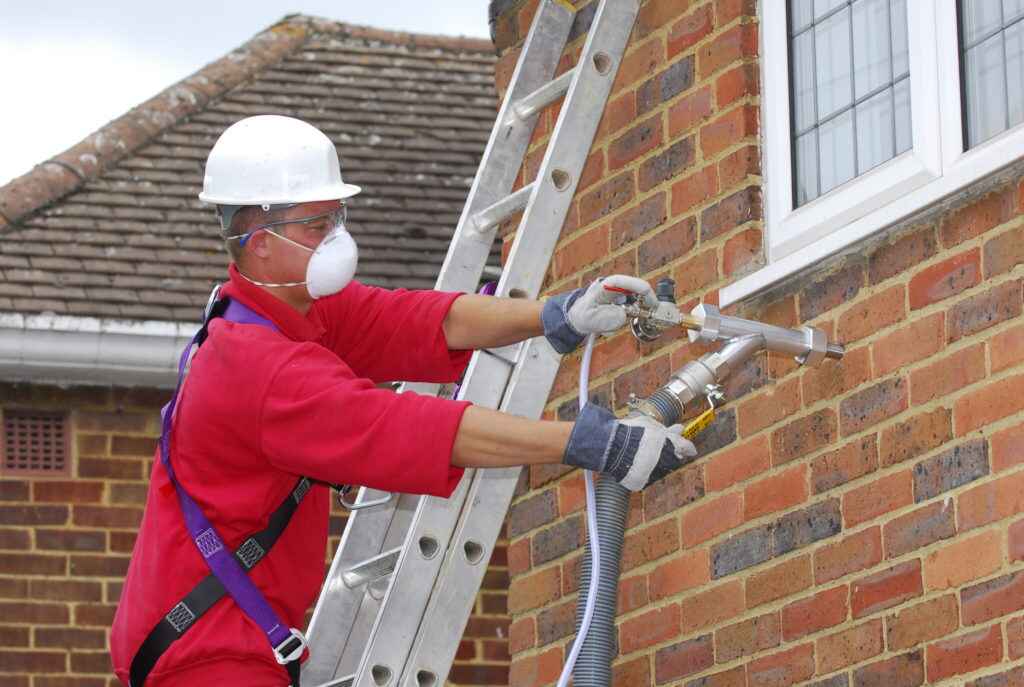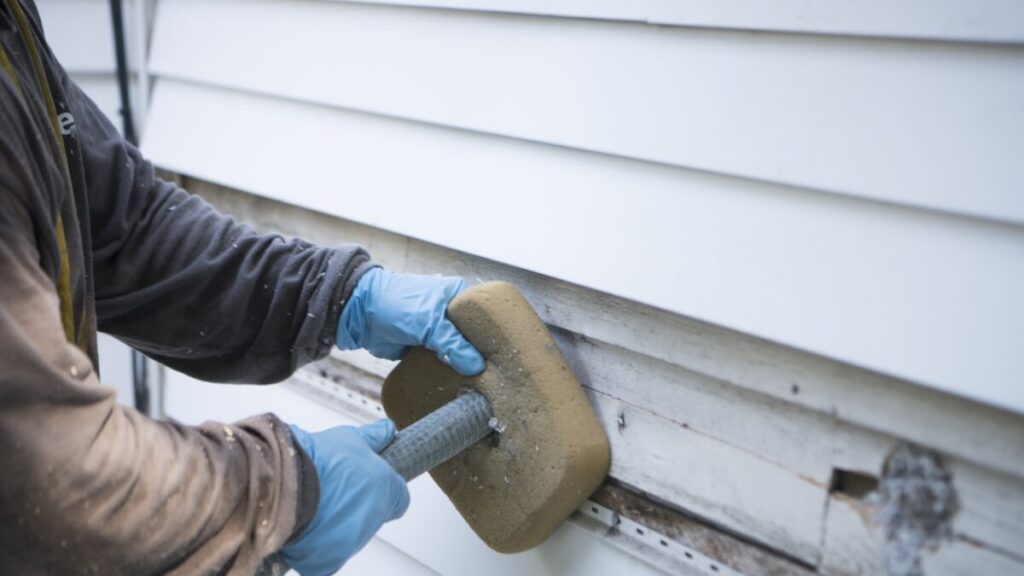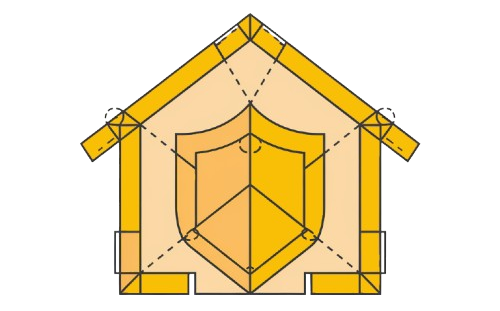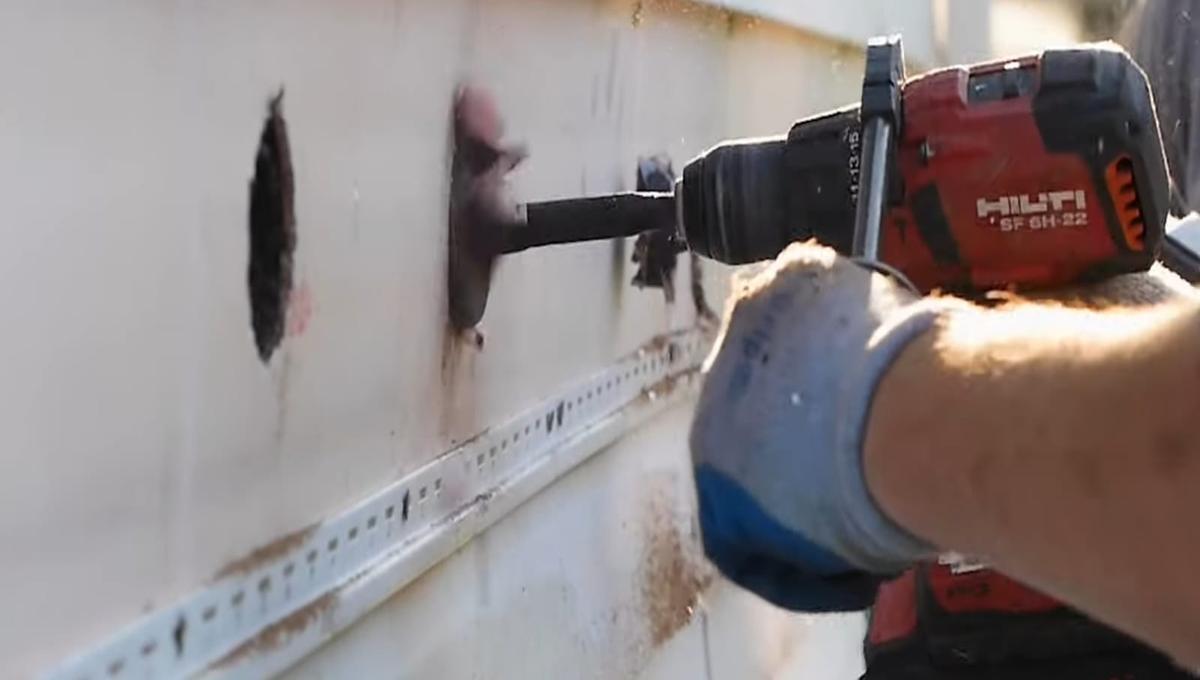If you’re thinking about replacing the insulation in your home or working on a new building, you may have heard of drill and fill insulation. It’s an excellent choice, especially for older homes with poor insulation or existing walls that need an upgrade. This method is generally less expensive and more efficient than traditional insulation, making it a great option for those facing high energy bills or searching for a solution to uneven temperatures.

Whether you’re planning an insulation update for your home’s current structure or exploring ways to improve a newly purchased property, drill and fill presents a practical approach. But what is it, and how does it work? Let’s take a closer look.
What is Drill and Fill Insulation?
Drill and fill insulation is a method used to re-insulate existing walls and improve energy efficiency without the need for major construction. This technique involves drilling small holes into each bay of a wall or cloded ceiling and blowing cellulose insulation into the empty spaces using a specialized machine. Unlike traditional batt insulation, which can leave gaps, this process ensures complete coverage by filling every nook and cranny, significantly reducing heat flow and improving indoor comfort.
One of the biggest advantages of this method is that insulation can be added without removing drywall, making it an ideal choice for redoing insulation in homes where tearing down walls isn’t practical. Professionals apply this technique with precision, sealing the drilled holes after installation to restore the wall’s appearance. This reliable and efficient approach is highly recommended for homes experiencing rising heating and cooling costs. Whether you’re updating your home’s current insulation or improving a recently purchased property, drill and fill offers a hassle-free way to enhance your home’s insulation.
The Process of Drill & Fill Insulation
Installing drill and fill insulation is a quick and efficient way to improve energy efficiency in your home. The process is carefully planned and executed by an expert to ensure complete coverage. The installation can be done either from the inside or outside of the house, depending on the structure. Before starting, a contractor will assess the situation and determine the best method to proceed.

Preparation Before Installation
- Before you begin, some pre-preparations need to be made.
- Move furniture out of the room and lay down drop cloths to capture dust produced during drilling.
- Locate the studs behind the wall and mark the targets using a battery-powered stud finder to speed up the process.
- Get the necessary tools from a local hardware store and ensure everything is ready for the next step.
Drilling & Insulation Application
- Attach a four-inch saw to a power drill and start drilling one- to two-inch diameter holes into each bay of the wall.
- Work slowly and cautiously to avoid hitting the studs.
- An installer will operate a blowing machine, while the other installer uses a hose to insert cellulose insulation into the holes.
- As the insulation is blown up, an installer will press down loose insulation to ensure maximum coverage.
Final Steps & Sealing
- Once the insulation has been filled, the holes are patched using construction material for a smooth, flat look.
- The area is then sealed completely, preventing air leaks and enhancing insulation performance.
- Afterwards, a coat of paint is applied using a paintbrush, restoring the wall’s original appearance.
- While some may consider doing it themselves, it is not recommended—it is best to hire professionals for a reliable and efficient job.
This method is especially useful for filling spaces between floors, which reduces sound transfer and improves insulation effectiveness.
How Drill and Fill Insulation Improves Home Efficiency
Many homes built before 1979 usually don’t have much wall insulation, which leads to problems like excessive heat escape and uneven indoor temperatures. Traditional batt insulation often doesn’t provide complete coverage, allowing gaps where air can move freely. This results in high cooling and heating costs, making the HVAC system work over time, stressing the unit and costing more on energy bills. What batts insulation is made of plays a crucial role in its effectiveness—these pre-cut sheets are typically made from fiberglass, mineral wool, or natural fibers, designed to fit snugly between wall studs, ceiling joists, and floor spaces. However, without proper installation, gaps may still form, reducing insulation efficiency.
The drill-and-fill process is an effective method to re-insulate these older homes by blowing insulation into every available space, ensuring total coverage and maximum effectiveness. This method also improves insulation performance by increasing R-value measurement, which shows how well the insulation retains heat. It remedies the problem of cold walls in the winter and prevents heat from entering during the summer, helping to retain more cold air for a higher comfort experience. Additionally, drill and fill insulation forms a barrier, sealing cracks and openings around objects like cables, pipes, basement doors, and more, preventing energy loss. Since it is a non-invasive technique, it allows for easy re-insulating of older homes without the need for major renovations, making it an ideal method to upgrade insulation efficiently.
The Unmatched Benefits of Drill and Fill Insulation
A Smarter Way to Insulate Your Home
When dealing with existing walls that need extra love, the drill and fill insulation process is a game-changer. This method involves drilling small holes into the walls and injecting insulation material directly inside. The insulation is then sealed back, ensuring that no gaps are left behind. Think of it like giving your home a cozy sweater that keeps it warm in the winter and cool in the summer. Unlike traditional insulation methods, this process reaches every nook and cranny, providing complete coverage and improving energy efficiency.
Precision Insulation Without Demolition
One of the biggest advantages of drill and fill insulation is its precision. This method targets specific areas that require improvement, ensuring full coverage without tearing down entire walls. Whether your home is older and outdated or part of a newer build that missed the mark on insulation, this method ensures a perfect fit. It is carefully applied using a structured method that fixes deficiencies in insulation while maintaining the integrity of the wall. The result? A home that feels just right, no matter the season.
Soundproofing Bliss
Are you tired of hearing every footstep or conversation from your neighbors? Drill and fill insulation doesn’t just help with temperature regulation—it also acts as a fantastic sound barrier. This method helps you enjoy peace and quiet, making your home feel like the sanctuary you deserve. By sealing gaps in the walls, it effectively reduces noise, keeping distractions out and creating a more peaceful environment.
Quick and Painless Installation
We understand that time is precious, and nobody wants to live in a never-ending construction zone. Thankfully, the drill and fill process is relatively quick and minimally invasive, ensuring you can get back to enjoying your space sooner rather than later. This method offers a hassle-free way to improve your home’s insulation without disrupting your daily life.
A Lasting Investment in Home Comfort
Investing in drill and fill insulation is not just a short-term fix—it’s a long-term investment in your home’s comfort and value. A well-insulated home stands the test of time, providing benefits for years to come. Whether you want to save on energy costs, reduce noise, or increase your property’s efficiency, this insulation method offers continuous advantages.
Final Thoughts
If your home qualifies for drill and fill insulation, it is a top way to improve energy efficiency and comfort. This method helps curb air escape by sealing cracks and openings, which in turn reduces drafts and cold spots. Proper insulation is important to prevent leakage and stop unchecked air movement that can contribute to moisture problems. These issues can affect both the health of occupants and the durability of a home. In older homes that might already have old wall insulation, this method is one of the most effective techniques used to re-insulate walls, ensuring they provide maximum R-value coverage and long-term efficiency. If you’re unsure, it’s best to ask a professional to assess your insulation needs.
FAQ
Is Drill and Fill Insulation Worth It?
Yes, drill and fill insulation is worth it, especially for homes with zero insulation in the walls. In my first house, a 1950 model, we hired a company that blew in insulation from the outside. They popped off vinyl siding, drilled holes at regular intervals, then covered, sealed everything, and put the siding back. It was an easy and effective way to insulate without major renovations.
What is the Drill and Fill Method of Insulation?
The drill and fill method is an insulation process that involves drilling small holes into existing walls and injecting insulation material inside. The holes are then sealed back up, ensuring full coverage. This method acts like a cozy sweater for your home, helping to keep it warm in winter and cool in summer.
What is the Drill and Fill Method?
Drill and fill means creating small holes in each bay of the wall or ceiling and blowing cellulose insulation directly inside using a blowing machine. This method ensures full coverage and improves energy efficiency without major renovations.
What Does Full Fill Insulation Mean?
Full fill cavity insulation means the space is completely filled, creating a continuous thermal barrier that helps in maximizing energy efficiency. This method enhances overall effectiveness by preventing heat loss. When installing, it is important to follow specific techniques to ensure optimal performance.

